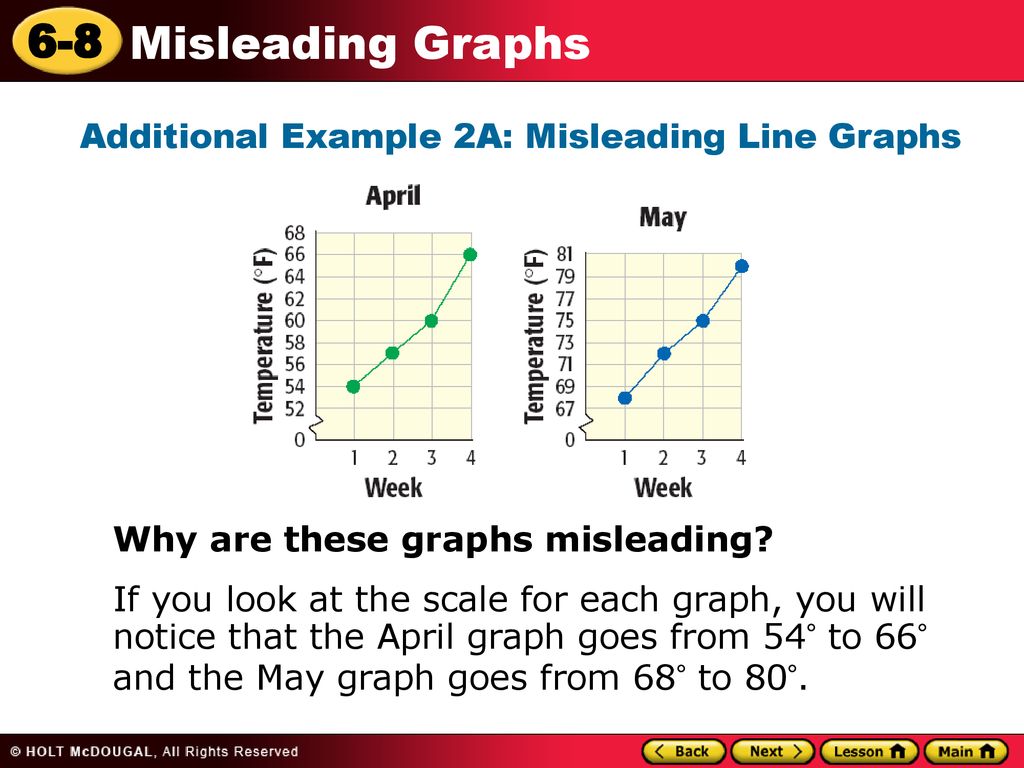Cool Tips About What Makes A Line Graph Misleading Pandas Plot

There is no data “in between” each player’s hit totals.
What makes a line graph misleading. Misleading graphs may be created intentionally to hinder the proper interpretation of data to argue/convince the people about something that supports them or accidentally due to unfamiliarity with graphing software, misinterpretation of data, or because data cannot be accurately conveyed. But as visual software has enabled more usage of graphs throughout all media, it has also made them easier to use in a careless or dishonest way — and as it turns out, there are plenty of ways graphs can mislead and outright. A baseline is zero on the vertical scale.
A line graph would not be appropriate, since the data is not continuous. By examining real graphs we look at how the design can effect how we understand the data. Skipping numbers on the vertical axis.
When interpreting graphs, there are three things you should always look for first: The source, chart type, axes and message. The answer is the graph is misleading because each state on the graph has a different size coastline.
The first is one of the most common problems that causes misleading graphs: Critical judgement of scale is very important when interpreting graphs. When you look at a graph and try to figure out if it’s a true representation of what’s really going on, check that baseline.
Glancing at the first bar graph, it appears that house prices have tripled. For example, florida’s vast amount of coastline may contribute to the fact that it has a far higher incidence of shark attacks than any. Graphs that have a missing baseline and start at some arbitrary number (34 on the fox news image) tend to be very misleading.
Omitting baselines, or the axis of a graph, is one of the most common ways data is manipulated in graphs. Start practicing—and saving your progress—now: Missing numbers on the vertical graph.
Showing an inappropriate or irregular scale. The first way is compressing or expanding the scale of a graph to make changes in data look more or less significant than they really are. Some common features of graphs that may lead to incorrect interpretations are:
This misuse can be intentional or accidental and is often seen in areas like advertising, politics, and media. Looking carefully at the scale, we can see that the scale begins at $79 000. On a line graph, this will distort the trend line.
These graphs may manipulate elements such as scale, axis intervals, and data selection. Misleading graphs, whether due to intentional deception or unintentional oversight, can skew the viewer's understanding of the data. What are the labels on the axes, what do the data points represent?
In statistics, a misleading graph, also known as a distorted graph, is a graph that misrepresents data, constituting a misuse of statistics and with the result that an incorrect conclusion may be derived from it. This video explains how graphs and charts can be misleading and some of the common mistakes. A circle graph does not make sense either, unless the writer wants to show the percentage of hits that each player has of the total number of hits.





















